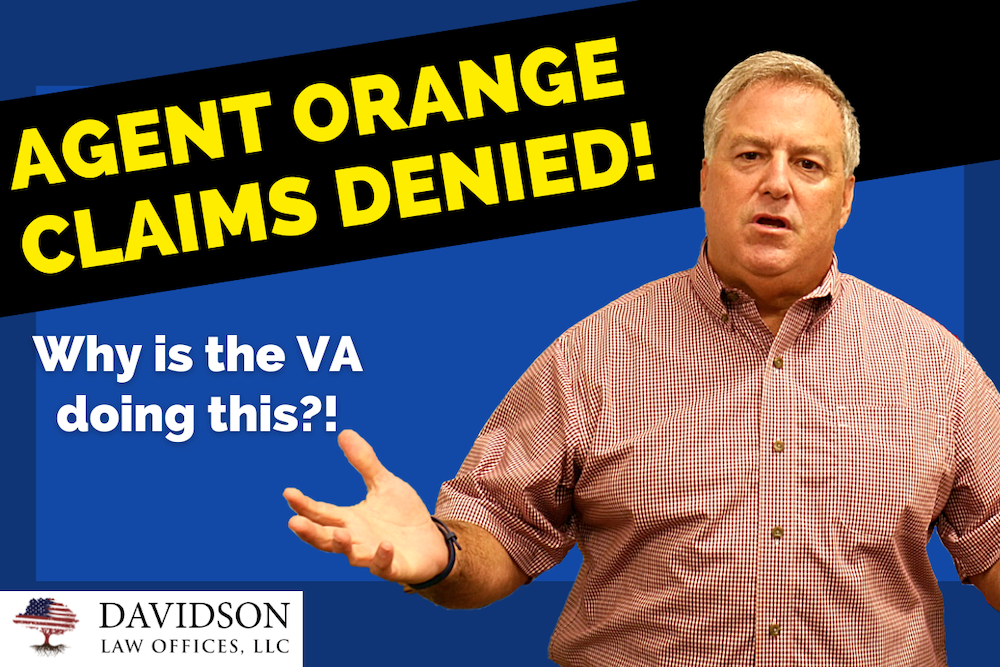In this blog I wanted to discuss some recent developments with regards to agent orange claims for Vietnam Veterans and the persistent denial of these claims by the VA. There are three conditions, which we’ll discuss below, for which the VA has consistently denied agent orange claims without much explanation. Veterans need the VA to get their act together so we can get these Veterans and their spouses the benefits they deserve.
In 2018 the United States Government Accountability Office (GAO) published a report regarding agent orange use in the Vietnam War. This report stems from Operation Ranch Hand, which was the military herbicide operation during the Vietnam War from 1962 to 1971. Operation Ranch Hand was part of a larger initiative called “Operation Trail Dust” which was the overall herbicidal warfare program for the United States Government.
Agent Orange Use in Vietnam
Operation Ranch Hand involved spraying approximately 19 million gallons of defoliates (agent orange and other herbicides) over the rural areas of south Vietnam. These herbicides were used to uncover where the enemy was hiding in the forests. Ambush attacks by the Vietnam in deep cover was becoming an issue, so the military solution was to remove the vegetation so that the Vietnam soldiers didn’t have as many places to hide.
Over 5 million acres of forest and about 500,000 acres of crops were damaged or destroyed during Operation Ranch Hand. That equates to approximately 20% of the forest in south Vietnam — a huge area! The herbicides were sprayed with Fairchild C123 aircraft using the call sign “hades.” These planes were equipped with specially-designed spray tanks and each plane had a capacity around 1,000 gallons. They would align four or five planes together and spray a wide swath at one time.
There have been several GAO studies regarding the US Government’s role in using these herbicides. The GAO reports showed that the VA was slow to publish the findings. Imagine that — the VA was slow because they got caught doing something they weren’t supposed to be doing. As a result, the VA was unwilling to share the data and was resistant to Congressional inquiry because they didn’t want to be exposed.
It’s odd to me that Congress didn’t use their power to dig deeper into this matter. Since Congress has the power of the purse, wouldn’t they be able to obtain the information? They’ve threatened, but nothing ever resulted from it.
This Operation Ranch Hand study has been consistently criticized for scientific and administrative shortfalls. Many believe that this study will never amount to anything and they’re probably right. The Government now presumes there are 15 illnesses that are service-connected as it relates to agent orange claims for Vietnam War Veterans who served in Vietnam, Thailand, or some of the surrounding Air Force bases in that part of the world. Those 15 presumptive illnesses for agent orange claims include Non-Hodgkins Lymphoma, Parkinsons, and lung cancer to name a few.
The Vietnam War ended in 1976, but they had been spraying agent orange herbicides since 1962. The VA and the military knew of the issues with these herbicides, but decided to put their head in the sand. The VA has denied agent orange claims for decades related to three specific conditions — nerve damage, skin cysts, and blistering. We have helped many Veterans over the years with their agent orange claims and would be glad to help you. Just send us an email to dearvaguy@gmail.com.
Agent Orange Claims for Nerve Damage, Skin Cysts, and Blistering
The VA created a one-year requirement for agent orange claims regarding nerve damage, skin cysts, or blistering. This meant that you had to show symptoms of these conditions within a year of your service in the Vietnam War. Obviously, that’s pretty ridiculous because some of these symptoms are not manifested until years after the agent orange exposure. It just doesn’t make sense why so many of these agent orange claims would be rejected based on this silly one-year rule.
The GAO study discovered many inconsistencies with the agent orange claims and the VA processors who were working on the claims. The report claims that the processors “didn’t understand” much of the evidence that was being submitted to them. In our practice we always submit a plethora of medical evidence with each claim to ensure that the VA is able to establish a connection between the Veteran’s disability and their service. We tell the doctors that the information they provide is going to be scrutinized by the VA, so that they provide the most comprehensive report possible to us.
If we’re submitting the correct information to the VA, but the processors aren’t understanding the evidence we’re submitting — that’s a huge problem! Why are they in that position if they are not trained to understand the evidence on an agent orange claim application? Unfortunately, this has happened for decades and many Veterans have been denied benefits as a result.
The VA estimates that only 8% of Veterans were awarded disability benefits when submitting agent orange claims for nerve damage, skin cysts, or blistering. That’s a very low number and means that 92% of Veterans were denied benefits for these common conditions. So of the 130,000 Veterans who applied for benefits based on these conditions, only 11,000 were granted disability benefits. That left approximately 119,000 Veterans without the benefits they deserved.
Unfortunately, some of those Veterans whose claims were denied aren’t with us anymore. That’s one of the huge problems with the VA. It takes them so long to change their processes so they can better serve our Veterans and their spouses. Imagine how many Veterans lives could have been different if those 119,000 would have been able to get benefits for their agent orange claims.
The GAO reported that the VA claims processors were unaware when the one-year requirement started. This suggests that there was a complete lack of training for claims processors, especially as it relates to agent orange claims. Why weren’t these people properly trained to review the medical evidence that was submitted? If we can submit credible medical evidence that suggests that their disability is service-connected, that should be enough.
If the VA was to remove this one-year requirement for nerve damage, skin cysts, and blistering, it would cost them a huge chunk of money. Estimates range anywhere from $16 billion to $25 billion in benefits that could be retroactively rewarded for agent orange claims. Although that sounds like a lot of money, it’s not that much to the US Government. They spend more than that on foreign aid. Maybe we should focus on taking care of our Veterans as opposed to taking care of other countries.
Contact Us So We Can Help!
We hope this article about agent orange claims has been enlightening and information. Many of the things covered in this article are unfortunate, but Veteran Affairs attorneys like myself are fighting hard to get Veterans the benefits they deserve.
If you have any further questions or need help submitting a claim to the VA, please complete this form or give us a call at (229) 226-8183. You can also send us an email to dearvaguy@gmail.com.
If you’d like to see this blog in video format, you can watch it below. Please be sure to SUBSCRIBE to our YouTube channel and click the bell notification button so that you’re notified each time we publish a new video.

